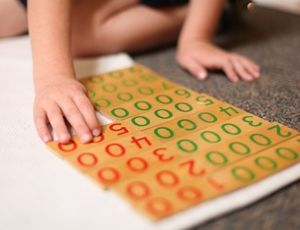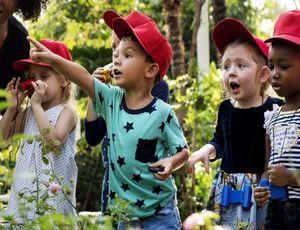A 3 Hour Block
By Marcia Kidd
As parents of a Montessori student, you probably have heard teachers refer to a portion of your child’s school day called the “work cycle”. In simple terms, the work cycle is a period of time in which the child independently chooses a series of activities which he completes purposefully and with concentration.
At the conclusion of each activity, she restores the materials before returning them to the shelf, often reflecting with satisfaction on her success before choosing her next activity.

Why is the work cycle important?
The work cycle aids the child’s intellectual growth and tenacity by promoting development of concentration in two ways:
- through completion of an increasing number of short activities over longer periods of time, OR
- through completion of one activity over a longer, uninterrupted period of time (Schmidt 1).
When Montessori observed students who were focused on their individual work cycles, she described the classroom as “normalized” – this is the peaceful, quiet hum of activity that parents often describe when observing in a Montessori classroom. It may surprise you to note that adults also benefit from a consistent work cycle.
In his book, The Seven Habits of Highly Effective People , Stephen Covey describes the habit of a work cycle as “creating an upward spiral of growth and change” – in other words, a pathway for continuous learning and improvement.
How long is the Montessori work cycle?
Montessori recommended a three-hourblock of undisturbed work time in order to allow children ages 2.5 and older sufficient time to complete both shorter and longer activities with concentration and at their own pace. The point at which the classroom as a whole stabilizes to sustain a three-hour work cycle may depend on the ages, experience, and individual makeup of the classroom; but work habits, concentration and independence should build toward normalization as the school year progresses. In fostering the growth of work habits and concentration, it is important that Montessori schools protect the work cycle from distractions and interruptions.
For this reason, circle times, special events, and specialist teachers are scheduled as much as possible either at the very beginning or end of the three-hour work period. In addition, as a matter of best practice, Montessori teachers try not to interrupt the child who is engaged and working with concentration.
What does a typical work cycle look like?
Typically, children enter the classroom and choose a succession of several activities with which they are familiar and comfortable. After completing several of these familiar activities, the child often enters into a state of restlessness, which Montessori described as “false fatigue”. During the state of false fatigue, while the child may appear to be tired and in need of rest, she is actually seeking and preparing to choose her most demanding work of the three-hour cycle. When students are allowed to independently work through their period of false fatigue, they often settle into their most challenging work, work that results in intense concentration and intellectual growth. As children complete the work cycle and this period of intense focus, they frequently reflect on the work they have done with satisfaction rather than exhaustion. Older children and adults may grow into two or more work cycles per day! The following diagram created by Maria Montessori represents the activities of a typical three-hour work cycle at the Early Childhood level.
Resources:
“Protecting the Three-Hour Work Cycle.”






